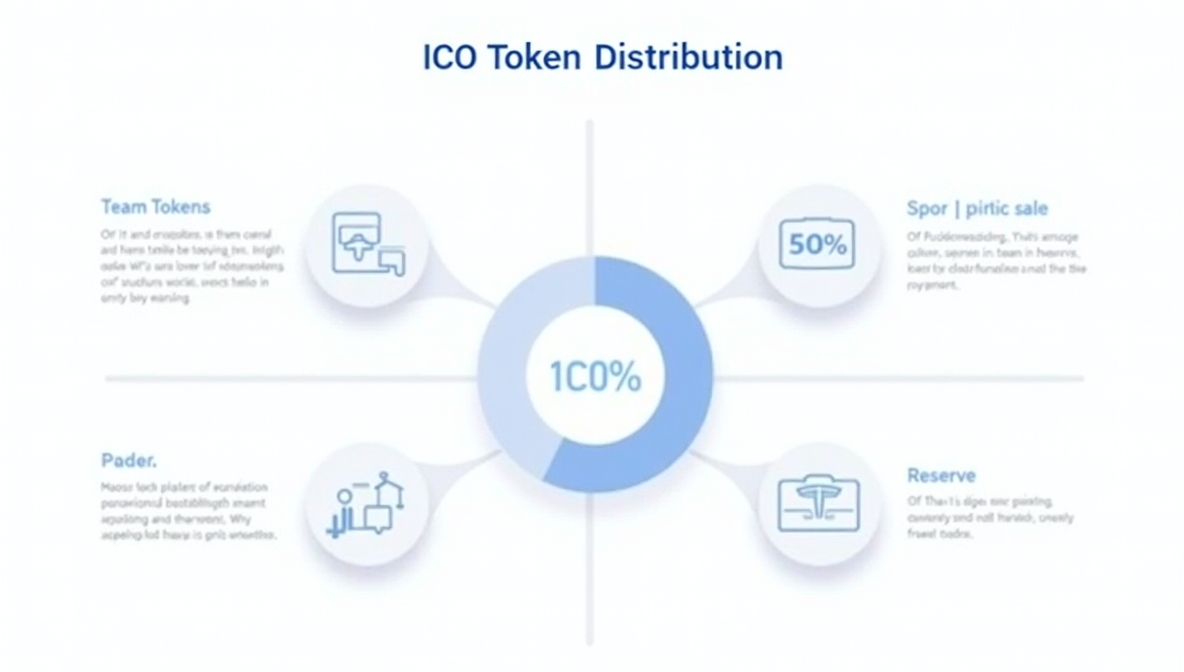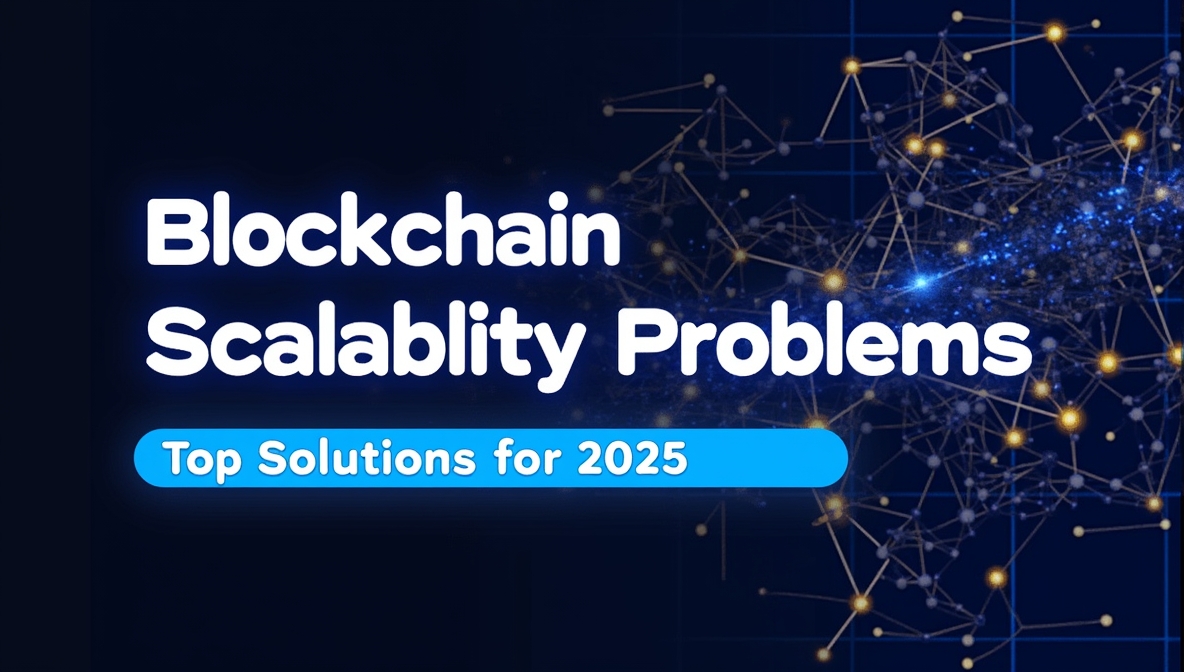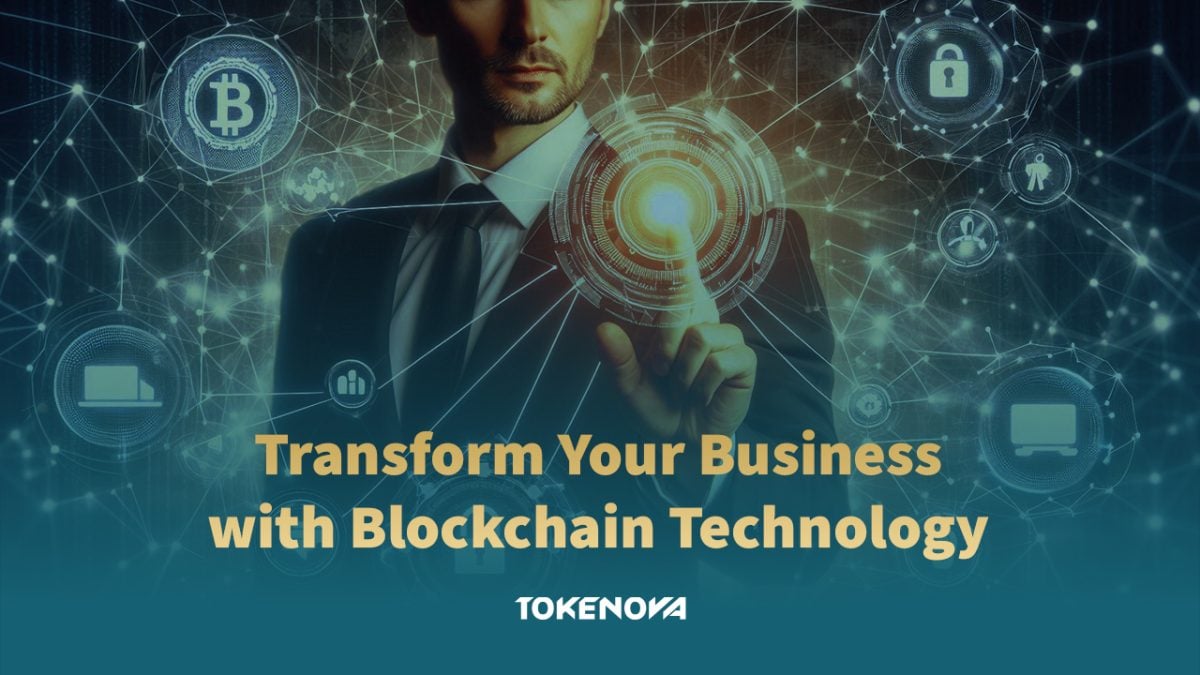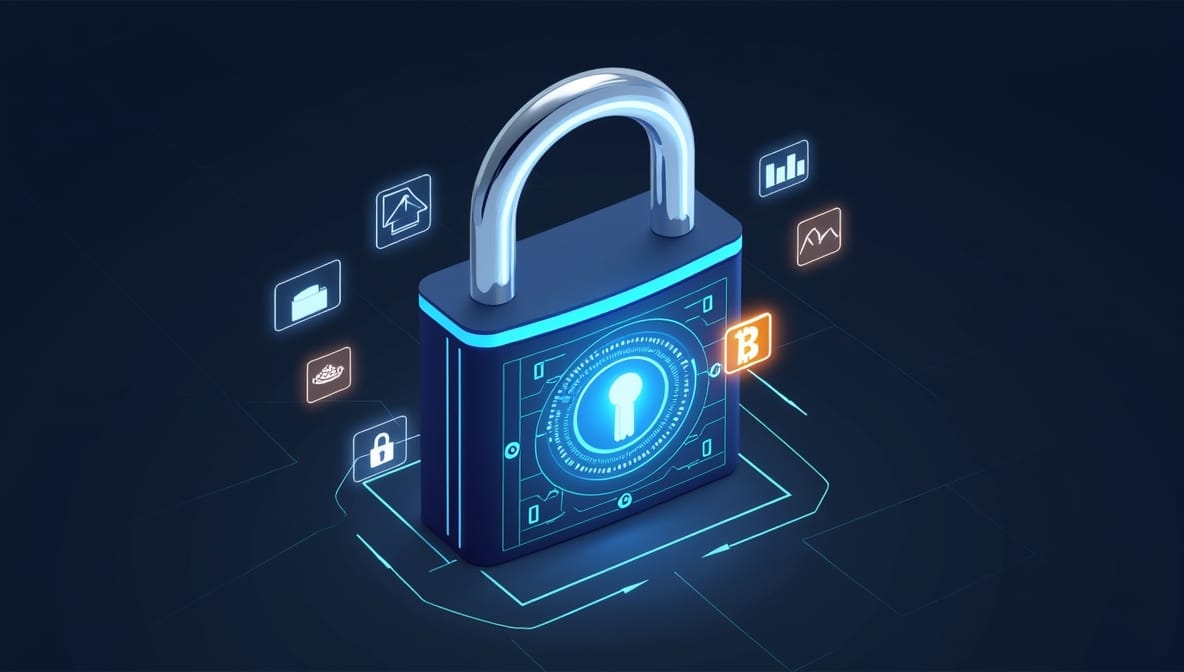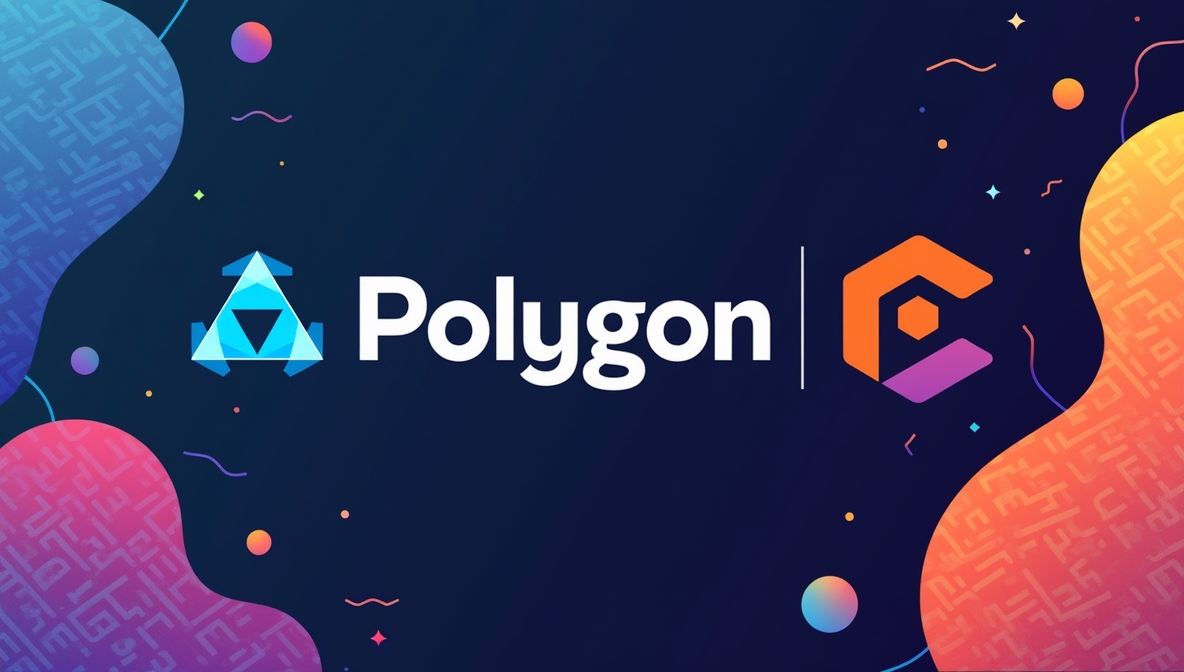Imagine entering a highly fortified digital vault, where every piece of sensitive information and valuable asset is shielded by layers of advanced technological protection. This is the essence of tokenization—a sophisticated and increasingly vital process that transforms sensitive data and real-world assets into secure, digital tokens. So, what is tokenization in its simplest form? It’s the act of converting something valuable into a protected digital representation, ensuring its utility while rigorously defending the original content from unauthorized access and potential cyber threats.
In this detailed guide, we will comprehensively explore what is tokenization and delve into its multifaceted nature. We’ll dissect its various types, understand the underlying mechanics, highlight its numerous benefits, address the challenges, and examine practical, real-world applications across diverse sectors. Whether you’re specifically interested in what is tokenization in blockchain or seeking to understand what is the meaning of tokenization in the realm of data security, this article aims to provide you with clear, actionable insights, empowering you to fully grasp and leverage its transformative potential.
What is Tokenization?
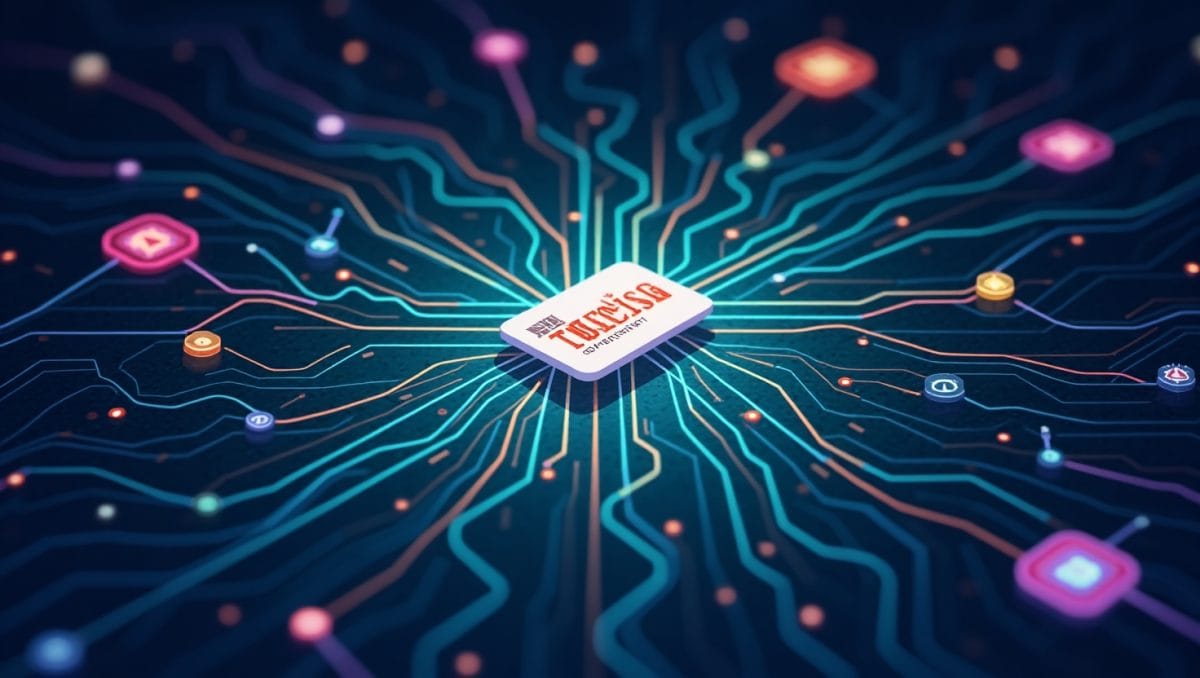
Tokenization is fundamentally a security process where sensitive data is substituted with non-sensitive, randomly generated equivalents known as tokens. These tokens are unique, unpredictable identifiers that hold no intrinsic or exploitable value if compromised. When we ask, what is tokenization?, the core answer is its profound ability to transform both digital data and physical assets into secure digital tokens. This transformation is crucial as it ensures that the original, sensitive information is never directly exposed during storage, transmission, or processing.
This powerful technology has become indispensable across a wide array of sectors, from finance and healthcare, where data protection is paramount, to digital rights management and the burgeoning field of blockchain technology. Why tokenization is important is underscored by its dual capability: it not only robustly protects sensitive data from breaches and unauthorized use but also significantly enhances operational efficiency by drastically mitigating the inherent risks associated with costly data breaches, regulatory non-compliance, and fraudulent activities.
A Detailed Look at Tokenization
At its core, the mechanism of tokenization is designed to abstract sensitive data, thereby significantly bolstering security. Consider, for instance, financial systems: when you make a credit card transaction online, your actual credit card number is rarely, if ever, directly used beyond the initial secure point of entry. Instead, it’s immediately replaced with a token. This token, a surrogate for your sensitive card details, is then used to process the transaction and is stored in systems. The crucial element is that this token is stored in a secure vault, entirely separate from the live transactional environment. This separation is key because even if a cybercriminal were to intercept a token during a transaction or breach a system storing tokens, the token itself is rendered useless without the secure and heavily guarded mapping back to the original, sensitive credit card number.
In the innovative realm of blockchain, what is tokenization in blockchain takes on an expanded meaning. Here, it involves the process of converting rights or units of a physical or intangible asset into digital tokens on a blockchain. This could encompass a wide spectrum of assets, from real estate and artwork to commodities and intellectual property rights. This digital transformation through tokenization facilitates fractional ownership, enabling multiple investors to own a portion of a single asset. It also dramatically speeds up transfer processes, reducing settlement times from days to near real-time, and crucially, it broadens market access on a global scale, connecting assets to a worldwide pool of potential investors and traders. Whether dealing with tangible assets like real estate or intangible ones like intellectual property, tokenization in blockchain unlocks new paradigms for investment, asset management, and innovation.
Types of Tokenization
Tokenization stands as a truly transformative technology, significantly enhancing security, boosting operational efficiency, and improving accessibility across a multitude of industries. From robustly securing sensitive financial details to enabling the fractionalization of high-value assets and even optimizing the performance of sophisticated artificial intelligence models, tokenization is playing an increasingly vital role in shaping modern digital systems.
To fully appreciate its breadth and depth, it’s essential to explore the three primary types of tokenization, each uniquely tailored for specific applications and challenges:
Data Tokenization: This type is primarily focused on protecting sensitive information. It involves replacing confidential data such as credit card numbers, Social Security numbers, personal health information (PHI), and other personally identifiable information (PII) with tokens. Data tokenization is crucial for regulatory compliance and preventing data breaches in sectors like finance, healthcare, and e-commerce.
Asset Tokenization: This involves the conversion of physical and digital assets into blockchain-based tokens. These assets can range from real estate, commodities, and artwork to stocks, bonds, and intellectual property. Asset tokenization aims to enhance liquidity by enabling fractional ownership and facilitating easier, faster trading on digital exchanges, thereby democratizing investment opportunities and improving market efficiency.
Tokenization in Natural Language Processing (NLP): In the context of NLP, tokenization is the process of breaking down text into smaller units, known as tokens. These tokens can be words, sub-words, characters, or symbols. This process is fundamental for machine learning, artificial intelligence, and computational linguistics applications, enabling computers to process, analyze, and understand human language effectively. For more details, please read our detailed article about Tokenization in NLP.
Understanding these distinct types of tokenization is paramount for effectively leveraging their potential in enhancing digital security, improving investment accessibility, and optimizing AI-powered solutions. Each type addresses unique challenges and offers specific benefits, making tokenization a versatile tool in the digital age.
Data Tokenization
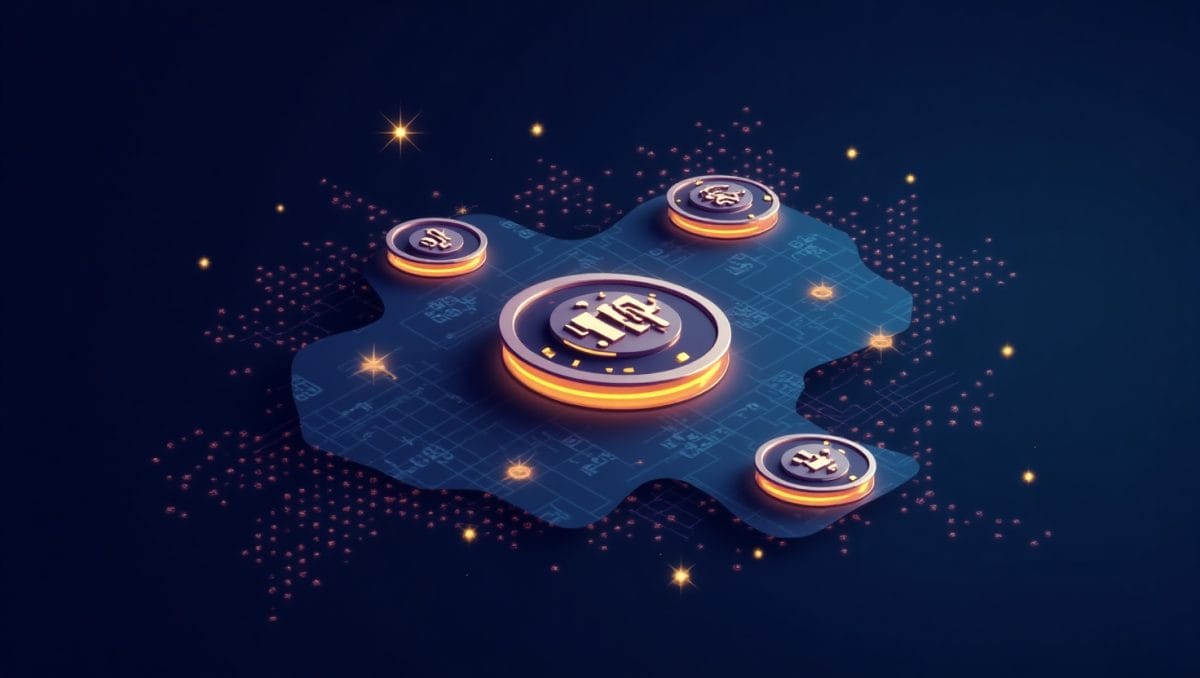
Data tokenization is a cornerstone security technique meticulously designed to replace sensitive data with non-sensitive tokens. These tokens are engineered to retain the essential usability and format of the original data within a system, ensuring that business processes can continue seamlessly. Simultaneously, data tokenization rigorously ensures that the original data remains unexposed and completely inaccessible outside strictly controlled, secure environments, often referred to as token vaults. A key differentiator between data tokenization and traditional encryption lies in its irreversibility without explicit authorization. Unlike encryption, which can be reversed using decryption keys, tokenized data cannot be reverted back to its original form unless accessed through an authorized token vault. This vault maintains a secure mapping between tokens and their original data, accessible only to authorized systems under stringent security protocols.
This robust method of data protection is extensively employed in sectors such as banking, healthcare, and identity protection. In these industries, adherence to stringent security standards and regulatory compliance is not just best practice—it’s a legal and ethical imperative. Data tokenization provides a powerful means to meet these rigorous demands, safeguarding sensitive information from unauthorized access and potential breaches.
Key Benefits of Data Tokenization
Enhanced Security & Data Protection
Prevents data breaches: Even if malicious actors manage to penetrate a database, the data they encounter is tokenized. This means that without access to the secure token vault and the mapping of tokens to original data, the breached data is essentially meaningless, significantly reducing the impact and value of a successful cyberattack.
Minimizes insider threats: By design, data tokenization ensures that employees and external parties interacting with systems primarily handle tokens, not the actual sensitive data. This drastically reduces the risk of data leaks or misuse from within the organization, as direct access to sensitive information is severely limited to only authorized personnel and systems.
Protects transaction data: In financial transactions, sensitive information like Payment Card Industry (PCI) data and Personally Identifiable Information (PII) are prime targets for fraud. Data tokenization effectively secures this transaction data by replacing sensitive card and personal details with tokens, thereby protecting against fraudulent activities and ensuring secure payment processing.
Regulatory Compliance & Legal Standards
Data tokenization is not just about enhancing security; it’s also a critical tool for helping organizations achieve and maintain compliance with stringent global regulations and legal standards. By implementing tokenization, businesses can significantly reduce regulatory risks and, importantly, strengthen customer trust by demonstrating a commitment to data protection. Key regulations where data tokenization plays a crucial role include:
PCI-DSS (Payment Card Industry Data Security Standard): This global standard is specifically designed to protect credit card information. Data tokenization aids in achieving PCI-DSS compliance by ensuring that actual cardholder data is replaced with tokens, thereby reducing the scope and complexity of compliance efforts.
GDPR (General Data Protection Regulation): The European Union’s GDPR mandates the privacy and protection of personal data for EU citizens. Data tokenization supports GDPR compliance by minimizing the processing of actual personal data, reducing the risk of data breaches, and enhancing user privacy.
HIPAA (Health Insurance Portability and Accountability Act): In the United States, HIPAA sets the standard for protecting sensitive patient health information. Data tokenization helps healthcare organizations meet HIPAA requirements by securing patient data, ensuring confidentiality, and facilitating secure data exchange for research and analytics without exposing patient identities.
What is the Meaning of Tokenization in Data Security?
In the specific context of data security, what is the meaning of tokenization? It fundamentally means substituting highly confidential and sensitive data with randomly generated, non-sensitive values—tokens—that possess no intrinsic meaning or value outside of their secure mapping to the original data. Unlike encryption, where data is transformed but can be reverted with a key, tokens are designed to be irreversible without access to the secure token vault. This irreversibility makes tokenization a fundamentally safer option for achieving regulatory compliance, significantly reducing data breach risks, and enhancing overall data security posture.
Asset Tokenization
Asset tokenization represents a paradigm shift in how ownership and trading of assets are managed. It involves the process of converting rights to physical or intangible assets into digital tokens on a blockchain platform. This innovative method introduces a suite of compelling advantages that are reshaping traditional asset markets:
Fractional Ownership:
Traditionally, high-value assets such as prime real estate, fine art, or precious commodities were accessible only to a limited number of affluent investors due to their substantial unit costs. Asset tokenization shatters this barrier by dividing these assets into smaller, more affordable tokens. This fractionalization democratizes investment, enabling a broader range of investors, including retail investors, to own a fraction of high-value assets, thereby diversifying their portfolios and accessing markets previously out of reach.
Enhanced Liquidity:
One of the major limitations of traditional asset markets, particularly for real estate and private equity, is their relative illiquidity. Selling or trading these assets can be cumbersome, time-consuming, and costly. Asset tokenization dramatically enhances liquidity by allowing tokenized assets to be traded on digital exchanges, often operating 24/7 and globally. This ease of trading facilitates more efficient transactions, reduces transaction costs, and fosters more dynamic and responsive market conditions.
Global Accessibility:
Traditional investment markets are often geographically restricted, with regulatory and logistical barriers limiting international participation. Asset tokenization transcends these geographical constraints. By representing assets as digital tokens on a blockchain, geographical barriers essentially vanish. This enables investors from across the globe to participate in markets and invest in assets that were previously geographically or jurisdictionally inaccessible, fostering a truly global investment landscape.
Mechanics of Tokenization
Understanding precisely how tokenization works is crucial for anyone looking to effectively leverage its potential. Whether the application is in data security, asset management, or natural language processing, the underlying process of tokenization generally follows a set of well-defined steps.
The Step-by-Step Process
-
Identification:
The initial step in tokenization is to meticulously determine which specific data elements or assets require protection or digital representation. For example, in a financial transaction system, the sensitive data identified for tokenization would be credit card numbers, bank account details, or personal identification numbers (PINs). In the context of blockchain-based asset management, the asset to be tokenized could be a piece of real estate, a work of art, or a share in a company.
-
Token Generation:
Once the data or asset is identified, the next step is token generation. This involves employing sophisticated algorithms to create a unique token that will serve as a surrogate for the original data or asset. The algorithm must ensure that each token generated is statistically random and carries absolutely no inherent or decipherable meaning that could be reverse-engineered to reveal the original data. The randomness and unpredictability of tokens are critical to their security efficacy.
-
Mapping & Storage:
After a token is generated, it must be securely linked to the original data or asset it represents. This linkage, or mapping, is typically stored in a highly protected and fortified system known as a token vault. This vault is not just a simple database; it is designed with layers of robust encryption, stringent access controls, and often, physical security measures. The security of the token vault is paramount, as it is the only place where the mapping between tokens and original sensitive data exists.
-
Processing:
With the token generated and securely mapped, the next step is to utilize the token in place of the sensitive data in all subsequent operations and transactions. This is a core principle of tokenization: the original sensitive data is never directly exposed within operational workflows. Instead, the token, a non-sensitive stand-in, is used for processing, storage, and transmission. This drastically reduces the attack surface and minimizes the risk of data breaches during routine operations.
-
Detokenization:
There are scenarios where it becomes necessary to retrieve the original data from its tokenized form. This process, known as detokenization, is strictly controlled and only permissible for authorized systems and users. When detokenization is required, the system securely queries the token vault, using the token to retrieve the original data based on the secure mapping established earlier. This process is heavily audited and logged to ensure that access to sensitive data is always justified and compliant with security protocols.
Technologies and Tools
The successful implementation of tokenization heavily relies on a range of advanced technologies and specialized tools, each tailored to the specific type of tokenization being applied.
NLP Libraries:
For tokenization in text processing and Natural Language Processing (NLP), specialized libraries are indispensable. Libraries such as NLTK (Natural Language Toolkit), SpaCy, and TensorFlow offer pre-built functions and models that significantly simplify the complex task of breaking down language data into tokens. These libraries provide various tokenization methods, from simple whitespace tokenization to more sophisticated techniques that handle punctuation, contractions, and language-specific rules.
Blockchain Platforms:
In the realm of asset tokenization, blockchain platforms provide the foundational infrastructure. Platforms like Ethereum, Binance Smart Chain, and Hyperledger Fabric are widely used for creating, managing, and trading tokenized assets. These platforms offer the necessary tools and protocols for representing real-world assets as digital tokens, ensuring transparency, security, and immutability of transactions and ownership records.
Encryption Methods:
For data tokenization, robust encryption methods are at the heart of securing the token vault and protecting the mapping between tokens and sensitive data. Secure encryption algorithms, such as AES (Advanced Encryption Standard), are combined with sophisticated token vault systems to ensure that tokens are cryptographically isolated from the sensitive data they represent. These systems often employ techniques like format-preserving encryption to maintain the data format while replacing sensitive information with tokens, ensuring compatibility with existing systems.
Benefits of Tokenization
Tokenization extends a wide array of compelling benefits that significantly surpass mere security enhancements. To fully appreciate its value, it’s crucial to explore why tokenization is important and how it can fundamentally transform organizational operations and strategic advantages.
Enhanced Security & Privacy
Reduced Data Breach Risks: By fundamentally altering the way sensitive information is handled, tokenization markedly minimizes the potential for damaging data breaches. Replacing actual sensitive data with tokens means that even in the event of a successful cyberattack or unauthorized access to databases, the information obtained by malicious actors is rendered useless without the ability to detokenize. This drastically reduces the risk of data exposure, financial losses, and reputational damage associated with data breaches.
Improved Data Isolation: Tokenization inherently promotes superior data isolation. Tokens, by design, are stored separately from the original, sensitive data. This segregation ensures that even if the tokenized environment, which is actively used for processing and transactions, is somehow compromised, the core sensitive data remains securely protected within the isolated token vault. This layered security approach is crucial for safeguarding highly sensitive information.
Regulatory Compliance: In an increasingly regulated digital landscape, tokenization serves as a powerful tool for helping organizations meet rigorous regulatory standards. Compliance with regulations like GDPR, PCI-DSS, HIPAA, and others often mandates stringent data protection measures. Tokenization directly addresses these requirements by reducing the scope of sensitive data in use and storage, thereby simplifying compliance efforts and mitigating legal and financial risks associated with non-compliance.
Economic and Market Advantages
Broadened Investment Opportunities: Asset tokenization is revolutionizing investment landscapes by making fractional ownership a practical reality. By dividing traditionally indivisible, high-value assets into tokens, it dramatically lowers the barrier to entry for investors. This democratization of investment allows a larger pool of investors, including retail participants, to own fractions of assets like real estate, fine art, or commodities, diversifying their portfolios and accessing markets that were previously exclusive to institutional or high-net-worth individuals.
Increased Liquidity: Traditional markets for high-value assets often suffer from illiquidity, making it difficult to quickly convert these assets into cash without significant price impacts. Tokenization addresses this by enabling tokenized assets to be traded on digital exchanges, often operating globally and around the clock. This ease of trading significantly enhances market liquidity, reduces transaction times and costs, and allows for more efficient price discovery, benefiting both buyers and sellers.
Global Market Reach: Tokenization effectively eliminates geographical barriers in asset markets. By representing assets as digital tokens on blockchain platforms, it enables seamless, borderless transactions. This global accessibility opens up markets to a worldwide audience of investors and traders, fostering greater market participation, increased capital flow, and opportunities for cross-border investments that were previously complex or impossible.
Efficiency and Automation
Streamlined Processes: The automation inherent in tokenization significantly streamlines data handling and asset management processes. By automating the substitution of sensitive data with tokens and the subsequent use of these tokens in operations, organizations can substantially reduce manual data processing efforts. This automation leads to reduced operational costs, faster processing times, and increased overall efficiency in various business workflows.
Real-Time Operations: Particularly in blockchain environments, tokenization facilitates real-time transaction processing and settlement. Tokenized transactions can be executed and recorded on the blockchain almost instantaneously, compared to traditional systems that may require days for settlement. This speed and efficiency are especially beneficial in financial transactions, supply chain management, and other time-sensitive operations, leading to faster business cycles and improved cash flow.
Error Reduction: Automated tokenization processes inherently minimize the risk of human error in data processing. Manual data handling is prone to mistakes, which can lead to inaccuracies, security vulnerabilities, and operational inefficiencies. By automating the tokenization and detokenization processes, organizations can significantly reduce the incidence of human errors, ensuring higher data accuracy, improved operational reliability, and better overall process integrity in critical operations.
Challenges and Limitations
While the advantages of tokenization are substantial, it’s crucial to acknowledge and carefully manage the inherent challenges and limitations associated with its implementation and use.
Technical Challenges
Data Integrity: Ensuring that tokens accurately and consistently map back to the original data is essential, especially when managing high volumes of transactions.
Token Ambiguity: If tokens are generated too similarly, ambiguity may arise, potentially leading to errors in data retrieval.
Edge Cases in NLP: Handling idioms, sarcasm, and domain-specific jargon can challenge the effectiveness of tokenization in natural language processing.
Regulatory and Compliance Issues
Evolving Legal Standards: The regulatory environment around tokenization, particularly in blockchain, is continually changing. Staying compliant requires constant vigilance and adaptation.
Data Protection Laws: Ensuring tokenization practices meet standards like GDPR involves rigorous safeguards to prevent unauthorized re-identification of tokenized data.
Adoption Barriers
Public Trust: Many individuals and organizations remain cautious about adopting new technologies like tokenization. Building trust through education and transparency is critical.
Technological Complexity: The technical demands of implementing a tokenization system can be significant, especially for small to mid-sized businesses.
Interoperability Issues: Integrating tokenized systems with existing legacy infrastructures often presents a technical challenge that requires specialized solutions.
Real-World Applications
Tokenization is not just a theoretical concept—it’s actively reshaping various industries. Here are some real-world examples of how tokenization is making an impact:
Finance
The financial sector is a pioneer in tokenization, utilizing it for everything from secure payment processing to innovative investment platforms.
Tokenized Securities: By breaking down high-value securities into tokens, financial institutions allow more investors to participate in the market.
Digital Wallets: Secure tokenization of financial data enables digital wallets to operate safely, reducing the risks of fraud.
Real Estate: Tokenization transforms real estate investments by dividing properties into tradeable tokens, making high-value assets accessible to a broader investor base.
Healthcare
Healthcare providers face immense pressure to protect patient data while facilitating seamless information exchange.
Patient Data Security: Tokenizing medical records ensures that sensitive patient information is protected during inter-organizational data exchanges.
Research and Analytics: Researchers can use tokenized data to perform comprehensive analyses without compromising patient privacy.
Digital Rights Management
In the digital age, protecting intellectual property is more critical than ever.
Copyright Protection: Tokenization allows creators to manage and track the distribution of their digital content, ensuring that royalties are accurately allocated.
Controlled Content Distribution: Digital platforms can leverage tokenization to regulate access to premium content, ensuring that only authorized users can view or purchase it.
Future Trends in Tokenization
As technology continues to evolve, so does the potential of tokenization. Future trends include:
Quantum Computing: The emergence of quantum computing may require more advanced tokenization methods to combat new security threats. Quantum-resistant algorithms could become the next standard.
Artificial Intelligence Integration: AI can further enhance tokenization processes by detecting anomalies and optimizing token generation in real-time, ensuring even stronger security.
Blockchain Expansion: Beyond finance, tokenization is set to revolutionize supply chain management, voting systems, and identity verification, making these systems more secure and transparent.
Internet of Things (IoT): With the growth of IoT, tokenization will be key in protecting the vast amounts of data transmitted between connected devices, reinforcing overall cybersecurity.
Regulatory Evolution: As governments adapt to new technologies, updated regulations will shape the future of tokenization. Proactive adaptation to these changes can significantly enhance trust and market adoption.
Expert Insights: Tokenization Mastery Tips
To fully benefit from tokenization, consider these expert strategies:
- Start Small: Begin with non-critical data or assets to familiarize your team with the tokenization process before scaling up.
- Choose Robust Tools: Invest in proven encryption libraries, blockchain platforms, and NLP frameworks that ensure reliability and security.
- Conduct Regular Audits: Frequent security audits and penetration tests can help identify and mitigate vulnerabilities in your tokenization system.
- Educate Your Team: Transparency and education are key. Ensure that all stakeholders understand tokenization and its benefits.
- Stay Compliant: Regularly update your practices to remain compliant with evolving data protection regulations such as GDPR and PCI-DSS.
- Leverage AI: Use AI-driven analytics to continuously monitor and optimize your tokenization processes, ensuring they remain robust against new threats.
Conclusion
Tokenization is undeniably revolutionizing the fundamental ways in which we manage and protect both data and assets in today’s increasingly digital world. By expertly converting sensitive information and valuable assets into secure tokens, organizations can achieve a significant reduction in the risk of damaging data breaches, streamline complex operational processes, and unlock entirely new investment opportunities. Whether you’re starting with the basic question, what is tokenization?, or diving deeper into specialized applications like what is tokenization in blockchain?, it’s clear that this technology provides a remarkably versatile and adaptable solution that is relevant across diverse industries, from the highly regulated finance and healthcare sectors to the cutting-edge fields of digital rights management and beyond.
The multifaceted benefits of tokenization are compelling and clear: enhanced security and data privacy, robust regulatory compliance, and significant operational efficiency gains. Furthermore, it democratizes asset ownership by enabling fractional investment and expands global market accessibility, creating more inclusive and dynamic economic ecosystems. While challenges such as technical complexities, data integrity concerns, and evolving regulatory landscapes do exist, proactive strategies, informed implementation, and the use of robust tokenization tools can effectively overcome these obstacles.
Embracing tokenization today is not just about enhancing immediate security measures; it’s about strategically positioning your organization at the leading edge of digital innovation. As technology continues its rapid advance, the transformative potential of tokenization will only continue to grow, solidifying its status as a crucial and indispensable element of the modern digital economy. By understanding and adopting tokenization, organizations can secure their operations, unlock new opportunities, and confidently navigate the complexities of the digital future.
FAQs
Q1: How does tokenization maintain secure data synchronization in decentralized systems?
Answer: In decentralized systems, tokenization ensures secure synchronization by primarily leveraging blockchain technology or, in some cases, centralized token vaults that are designed to operate in a decentralized manner. These systems employ advanced cryptographic protocols and robust consensus mechanisms to meticulously maintain a consistent and secure mapping between tokens and their corresponding original data across all nodes within the network. This approach guarantees that even in a distributed environment, data integrity and security are preserved, and the relationship between tokens and data remains uncompromised.
Q2: What advanced cryptographic methods are recommended for robust token generation?
Answer: For effective and robust token generation, a sophisticated combination of cryptographic methods is typically recommended. This often includes symmetric encryption algorithms, such as AES (Advanced Encryption Standard), known for their speed and efficiency in encrypting large volumes of data. Complementing this, asymmetric encryption methods, like RSA (Rivest-Shamir-Adleman) or ECC (Elliptic Curve Cryptography), are used for secure key exchanges and digital signatures. This dual cryptographic approach ensures that generated tokens are not only unique and unpredictable but also highly resilient against reverse engineering and unauthorized access, providing a strong foundation for secure tokenization systems.
Q3: How can interoperability be achieved between tokenization systems across various blockchain platforms?
Answer: Interoperability is achieved through the adoption of standardized protocols and blockchain bridges, which allow different tokenization systems to communicate and transfer tokens seamlessly without compromising data integrity.
Q4: What strategies can mitigate token ambiguity in high-frequency trading environments?
Answer: Mitigating token ambiguity involves implementing robust token generation algorithms, performing regular synchronization checks, and employing real-time auditing. Additionally, blockchain-based immutable records can ensure each token remains unique and traceable even in rapid trading conditions.



